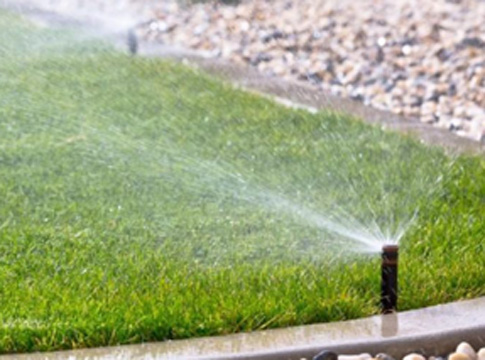Related News
Related News
-
EWEB Hosts Annual Spill Drill to Protect McKenzie River
EWEB led emergency responders in its annual “spill drill” on the McKenzie River on Wednesday, Oct. 15, at the Trail Bridge Campground.
Find Out More -
A day in the life: Monitoring water quality throughout the McKenzie Watershed
Follow Senior Environmental Specialist David Donahue as he collects water quality samples from throughout the watershed as part of EWEB's early warning system for threats to Eugene's drinking water.
Find Out More -
EWEB Partners with Eugene School District 4J to Celebrate New Kennedy Middle School Emergency Water Station Site
Hundreds of attendees practiced filling up water containers at Saturday's demonstration event.
Find Out More -
Quartz Creek: Setting the Stage for Floodplain Restoration
The project resets the floodplain along 1.8 miles of a formerly channelized creek to improve water quality, fish habitat and natural disaster resiliency.
Find Out More -
Pure Water Partners: 5 Years of Regeneration
As EWEB and the Pure Water Partners observe the fifth anniversary of the Holiday Farm Fire, we celebrate major milestones in the watershed's recovery and check back in with PWP landowners who still have a lot of work ahead as they continue to rebuild their lives.
Find Out More -
You can’t predict the next disaster, but you can prepare
The earthquake lasted less than a minute. But now the power’s out. The tap runs dry. Cell service is spotty. Would you be ready?
Find Out More -
EWEB Celebrates Operators on the 75th Anniversary of the Hayden Bridge Filtration Plant
Learn more about the Water Treatment Plant Operators who have kept the Hayden Bridge Filtration Plant running for the last 75 years.
Find Out More -
NASA partners with EWEB to assess wildfire impacts to drinking water
NASA's Earth Information Center shares a new video detailing how EWEB's Drinking Water Source Protection work is advising new research tools
Find Out More -
EWEB environmental specialist wins prestigious awards for publication
Article recounting EWEB’s efforts to protect the McKenzie River after Holiday Farm Fire earns national recognition
Find Out More -
Last Call for EWEB/Lane County Septic Grants
Holiday Farm Fire recovery program now eligible for businesses, residential property owners who purchased post-fire, to cover inspection costs and new construction
Find Out More -
Habitat Restoration Underway on McKenzie River
Partners at EWEB, McKenzie River Trust, the McKenzie Watershed Council, and the U.S. Forest Service broke ground on a major floodplain restoration project in Quartz Creek.
Find Out More -
Hayden Bridge celebrates 75 years of service as EWEB looks forward to a new era of water resiliency
EWEB Water Treatment Supervisor, Toby Dixon, looks back at how the Hayden Bridge Water Filtration Plant has changed over the years and explains what EWEB is doing to secure a more resilient water future.
Find Out More -
Water professionals showcase skills in Cascade to Coast Competition
Representatives from local utilities competed to see who has the best-testing water, who can assemble a water meter the fastest and who find the most creative way to solve a routine problem that water utility professionals often face.
Find Out More -
McKenzie River Water Quality Remains Excellent
The quality of the McKenzie River’s water remained excellent in 2024, according to the Eugene Water & Electric Board’s (EWEB) 2024 McKenzie Watershed Report, which was published this month.
Find Out More -
EWEB awarded $1 million for wildfire resiliency projects from Federal funding package
Funds will be used to support fuels reduction work on a landscape scale in high-risk areas in the McKenzie River Valley and Eugene South Hills.
Find Out More - Show More
Be a Good Neighbor: Get Your Backflow Assembly Tested
July 27, 2020

With irrigation season in full swing, now is a good time to protect yourself, your family and your neighbors by making sure any cross connections at your home or business have functioning and tested backflow assemblies.
A cross connection is created when your building's pipe or hoses are connected to a system or container that holds anything other than pure drinking water. Landscape sprinkler systems, swimming pools and fire sprinklers are examples of cross connections.
When you turn on the tap to fill a glass with drinking water, that water flows because the pressure in the distribution system pushes the water out of the pipes, through your tap and into the glass. A change in the pressurized drinking water system can cause water to flow backwards - sucking potential contaminants into the drinking water system as if through a straw.
Even a garden hose sitting in a bucket of soapy, dirty car-washing solution can act as a straw if a low-pressure event occurs. This, too, can send contaminants into the drinking water system.
A functioning and maintained backflow prevention assembly on such systems prevents contaminated water from "backflowing" into the drinking water system. Keep in mind that if a backflow incident occurs, it could contaminate not only your water, but your neighbor's drinking water as well.
The state of Oregon (OAR 333-061-0070) and EWEB require that all backflow prevention assemblies on the systems listed below be tested each year in order to comply with health and plumbing codes.
- Landscape sprinkler systems
- Pools and spas
- Heating, cooling and fire sprinkler systems
- Wells
- Any possible pollutant or contaminant
If you haven't called your regular backflow assembly tester yet for the annual inspection, EWEB and your neighbors ask that you do so immediately. Click here for a list of certified backflow assembly testers.

